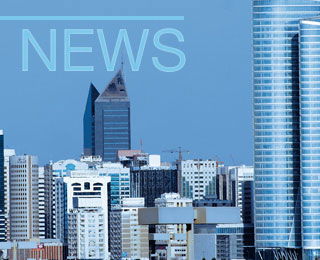Dangote Cement reported group revenue up two per cent to NGN476.9bn (US$1.23bn) in the 1H20. Group EBITDA rose to NGN218.1bn and pan-African EBITDA increased by 31.6 per cent to NGN31.5bn. Profit before tax was up 4.7 per cent to NGN162.9bn and net debt stood at NGN372.1bn at the end of 30 June 2020.
Michel Puchercos, Group CEO, said: "I am humbled by the fact that we continue to be in a strong position despite the economic downturn that the world is facing due to COVID-19. Although April was greatly impacted by lockdowns and restrictions across our operations, we experienced a strong quarter. We achieved a record high volume and EBITDA margin in pan-Africa of 4.7Mt and 21.7 per cent, respectively. Group EBITDA was up slightly despite the impact of COVID-19."
Nigerian results
Due to the COVID-19 pandemic, the government enforced full lockdown in Lagos state, Abuja (FCT) and Ogun state from 31 March to 4 May 2020. As a result, April volumes were heavily impacted and 28 per cent lower than the volumes realised during the same period last year. Other states joined with complete or partial lockdown during the month.
Nigeria's cement market expanded two per cent compared to 1H19, says Dangote. The company's Nigerian operations sold 7.382Mt of cement in the period, with the absence of land exports. Domestic volumes were up 1.8 per cent as most of the losses in April were recouped by June 2020. Nigeria's total sales volumes for the 1H20 was 7.41Mt, which includes cement and clinker. Revenues for the Nigerian operations increased by 1.2 per cent to NGN332.4bn.
Pan-African operations
Pan-Africa sales volume was 4.73Mt in the 1H20, up 0.7 per cent despite various lockdown and restrictions across the company's operations. The total pan-African volume represents 39.1 per cent of group volumes. Pan-African revenues of NGN145bn were 3.5 per cent higher than in 1H19 and represented 30.4 per cent of total group revenues. The region also achieved a record high EBITDA of NGN31.5bn.
Cameroon's market reached about 1.8Mt in the first six months of 2020, driven by individual construction projects and government housing estates. The Douala plant sold approximately 687,000t of cement in the 1H20, a 15 per cent increase compared to the 1H19. Dangote's market share reached 38 per cent during the period.
Meanwhile, the Republic of Congo's cement market totalled about 386,000t in the 1H20. The Mfila plant sold just under 136,000t of cement in the 1H20, up 10 per cent compared to 1H019. The company's market share reached 35 per cent.
Ethiopia's cement market was around 3.7Mt in the 1H20 and sales from the Mugher plant were 1.1Mt, up 16 per cent YoY, Dangote’s market share was 30 per cent.
Dangote Cement Ghana sold 208,000t of cement in the 1H20, down 17 per cent compared to 1H19. The closure of business from the end of March to 19 April affected Dangote's sales volumes and gave the company a six per cent market share.
Buoyed by construction, Senegal continues to be Dangote's best-performing market. Sales from the Pout plant increased by seven per cent to just over 850,000t for the 1H20. The company's market share rose to 25 per cent in the 1H20. Senegal also received 27,800t of clinker from our Nigerian operations.
Meanwhile, Sierra Leone’s cement market consumed about 429,000t in the first half of 2020. The company's market share was 29 per cent in the 1H20 while company volumes increased by six per cent to 127,000t.
South Africa saw Dangote's sales volume for the 1H20 decrease by nine per cent YoY mainly due to low growth in the cement market and the country’s lockdown.
In Tanzania business was also tough with the Mtwara plant selling 526,000t volumes during the period, four per cent lower than the same period last year. The company’s market share is estimated at 17 per cent.
Finally, Zambia's cement market decreased by 18 per cent in the 1H20 due to a depressed macro-economic environment. Infrastructure investments have significantly reduced. The Ndola factory sold 346,000t of cement in the period, down 30 per cent compared to the same period last year.

Power Cement reports positive 3Q and 9MFY24-25 results
Pakistan-based Power Cement Ltd posted PKR7.182bn (US$52.5m) in revenue for the quarter ended ...